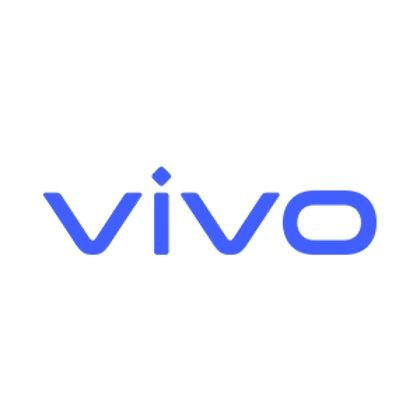
Edge computing is transforming how data is processed, analyzed, and stored by bringing computation closer to the data source. This paradigm shift is driving new innovations across various industries, including IoT, autonomous vehicles, smart cities, and industrial automation. As a result, understanding the basics of edge computing is becoming essential for developers, IT professionals, and tech enthusiasts. Whether you are new to this field or looking to enhance your knowledge, the following platforms offer some of the best resources to learn edge computing basics in 2024.
1. Coursera
Overview:
Coursera is a well-known online learning platform that partners with leading universities and companies to offer courses on a wide range of subjects, including edge computing. Coursera’s courses are designed to provide a solid theoretical foundation along with practical applications, making it an excellent choice for beginners.
Key Features:
- University-Level Content: Courses are created by top universities and institutions, ensuring high-quality content and up-to-date information.
- Flexible Learning: Courses are self-paced, allowing learners to study at their convenience.
- Certificates: Earn a certificate upon completion of a course, which can be added to your resume or LinkedIn profile.
- Hands-On Projects: Many courses include hands-on projects and labs to apply what you’ve learned.
Top Courses to Consider:
- Introduction to Edge Computing by the University of Illinois: This course provides a comprehensive introduction to the concepts and applications of edge computing.
- Cloud Computing Specialization by the University of Illinois: Includes modules on edge computing as part of a broader curriculum covering cloud technologies.
2. edX
Overview:
edX is another leading online learning platform that offers high-quality courses from top universities and institutions. It provides courses on a variety of tech topics, including edge computing, cloud computing, and IoT.
Key Features:
- University Collaboration: Courses are offered by prestigious universities such as MIT, Harvard, and the University of California, Berkeley.
- Verified Certificates: edX offers both free and paid courses, with the option to receive a verified certificate upon completion.
- Comprehensive Content: Courses range from basic introductions to advanced topics in edge computing and related fields.
- Interactive Learning: Engaging content, including quizzes, interactive exercises, and discussion forums, to enhance learning.
Top Courses to Consider:
- Edge Computing: Fundamentals and Applications by The Linux Foundation: This course covers the basics of edge computing and explores its applications in various industries.
- IoT and Edge Computing for Beginners by Curtin University: A beginner-friendly course that introduces IoT and edge computing concepts and their real-world use cases.
3. Udacity
Overview:
Udacity offers “Nanodegree” programs that provide specialized training in various technology fields, including edge computing. These programs are designed in collaboration with industry experts and provide in-depth knowledge through a combination of theoretical lessons and practical projects.
Key Features:
- Nanodegree Programs: Comprehensive programs that include detailed lessons, quizzes, and hands-on projects.
- Industry Collaboration: Courses are developed in collaboration with companies like Intel, Nvidia, and AWS, ensuring relevant and up-to-date content.
- Mentorship and Career Support: Access to mentors and career services, such as resume reviews and job placement assistance.
- Flexible Learning Path: Self-paced learning with personalized feedback from instructors.
Top Courses to Consider:
- Cloud DevOps Engineer Nanodegree: While primarily focused on cloud computing, this program includes modules on edge computing and deploying edge-based applications.
- AI for Edge Computing Nanodegree: This program teaches how to design, develop, and deploy AI applications on edge devices.
4. LinkedIn Learning
Overview:
LinkedIn Learning provides a range of courses on technology and business topics, including edge computing. The platform is known for its easy-to-consume video format and integration with LinkedIn, which allows learners to showcase their skills directly on their profiles.
Key Features:
- Expert Instructors: Courses are taught by experienced professionals in the field.
- Bite-Sized Content: Courses are broken into short, easy-to-digest videos, making them ideal for busy professionals.
- Certificates of Completion: Upon completing a course, learners receive a certificate that can be added to their LinkedIn profile.
- Diverse Course Library: A wide range of courses covering edge computing, IoT, cloud computing, and related technologies.
Top Courses to Consider:
- Edge Computing: Introduction and Overview: An introductory course that covers the fundamental concepts and use cases of edge computing.
- IoT Foundations: Edge Computing and IoT: A course that explores how edge computing enhances IoT applications by processing data closer to the data source.
5. IBM Skills Network
Overview:
IBM Skills Network offers a variety of free and paid courses focused on cloud computing, AI, data science, and edge computing. These courses are designed by IBM experts and provide practical knowledge and skills for working with IBM technologies and open-source platforms.
Key Features:
- Hands-On Labs: Provides extensive hands-on labs and real-world scenarios to help learners apply their knowledge.
- Self-Paced Learning: Courses are self-paced, allowing flexibility for busy professionals.
- Free and Paid Options: Offers both free courses and more advanced, paid options with certificates.
- Industry-Relevant Content: Courses are developed by IBM experts, ensuring the content is relevant and up-to-date.
Top Courses to Consider:
- Edge Computing Fundamentals: A course that introduces the basics of edge computing, its architecture, and key applications.
- Deploying Edge Computing Solutions with IBM Watson IoT Platform: Focuses on deploying edge computing solutions using IBM’s cloud and IoT platforms.
6. AWS Training and Certification
Overview:
Amazon Web Services (AWS) offers a range of training programs and certifications related to cloud and edge computing. The AWS Training and Certification platform provides access to a variety of courses designed to build skills in cloud architecture, IoT, and edge computing.
Key Features:
- Official AWS Content: Courses are designed by AWS experts, ensuring comprehensive coverage of AWS services related to edge computing.
- Hands-On Labs and Real-World Scenarios: Provides practical experience through hands-on labs and simulated environments.
- Flexible Learning Options: Self-paced digital courses and instructor-led classroom sessions.
- Certification Opportunities: Prepare for AWS certifications, such as the AWS Certified Solutions Architect or AWS Certified Machine Learning – Specialty.
Top Courses to Consider:
- AWS IoT: Developing and Deploying an Internet of Things: Includes modules on edge computing, covering how to use AWS Greengrass for deploying edge applications.
- AWS Edge Computing and IoT Fundamentals: A foundational course that covers the basics of edge computing and how to implement edge solutions using AWS services.
7. Microsoft Learn
Overview:
Microsoft Learn offers free, self-paced learning paths to help professionals build their skills in cloud computing, edge computing, AI, and IoT. It provides a range of resources to learn how to use Microsoft Azure services for edge computing solutions.
Key Features:
- Free Learning Modules: Offers a variety of free modules covering edge computing, Azure IoT, and other cloud services.
- Interactive Content: Provides interactive tutorials, hands-on labs, and sandbox environments to practice skills.
- Certification Preparation: Helps learners prepare for Azure certifications, such as Azure IoT Developer Specialty.
- Integration with Azure Sandbox: Learners can practice skills in a real Azure environment without incurring costs.
Top Courses to Consider:
- Introduction to Azure IoT and Edge Computing: An introductory course that covers the basics of Azure IoT services and edge computing.
- Design and Implement Edge Computing Solutions on Azure: Teaches how to build, deploy, and manage edge computing solutions using Azure IoT Edge.
8. The Linux Foundation
Overview:
The Linux Foundation offers a range of courses and certifications related to open-source technologies, including edge computing. Their courses are designed to provide a deep understanding of edge computing frameworks and tools.
Key Features:
- Open-Source Focused: Courses focus on open-source tools and technologies, such as Kubernetes and LF Edge.
- Comprehensive Curriculum: Covers both foundational knowledge and advanced concepts in edge computing.
- Certification Opportunities: Offers certifications that validate skills and knowledge in edge computing and related fields.
- Expert Instructors: Courses are taught by experienced professionals and contributors to open-source projects.
Top Courses to Consider:
- Introduction to Open Source Edge Computing: A beginner-friendly course that covers the basics of edge computing, its use cases, and its benefits.
- Edge Computing with Kubernetes: Focuses on using Kubernetes to manage and deploy applications at the edge.
9. Pluralsight
Overview:
Pluralsight is an online technology skills platform that offers courses on various IT and software development topics, including edge computing. It is known for its skill assessment features and personalized learning paths.
Key Features:
- Skill Assessment: Provides tools to assess your current skill level and recommends courses to address knowledge gaps.
- Learning Paths: Offers structured learning paths for comprehensive understanding and skill development.
- Hands-On Labs: Includes practical labs and interactive exercises to reinforce learning.
- Wide Range of Courses: Covers a broad spectrum of topics, including cloud computing, IoT, and edge computing.
Top Courses to Consider:
- Understanding Edge Computing: A foundational course that introduces edge computing concepts and explores its applications.
- Implementing IoT and Edge Computing Solutions: Focuses on building and deploying edge computing solutions using different technologies.
10. Udemy
Overview:
Udemy is a popular online learning platform that offers a vast selection of courses on almost any topic imaginable, including edge computing. The platform provides both free and paid courses, making it accessible for learners with varying budgets.
Key Features:
- Affordable Pricing: Courses are often discounted, making them affordable for most learners.
- Diverse Course Selection: Offers a wide range of courses on edge computing, from beginner to advanced levels.
- Lifetime Access: Pay once and get lifetime access to the course materials, including updates.
- Self-Paced Learning: Courses are self-paced, allowing learners to progress at their own speed.
Top Courses to Consider:
- Edge Computing for Beginners: An introductory course covering the basics of edge computing and its use cases.
- IoT and Edge Computing Fundamentals: Provides a solid foundation in both IoT and edge computing, ideal for beginners.
Conclusion
Learning the basics of edge computing is essential for anyone looking to build a career in the rapidly evolving tech landscape. The platforms mentioned above offer a range of courses and resources that cater to different learning styles and experience levels. Whether you prefer a university-level course on Coursera or edX, a hands-on project-based program on Udacity, or a quick introductory course on Udemy, there is an option for everyone. Choose the platform that best fits your needs, and start your journey into the world of edge computing today.
ALSO READ: Top Natural Language Processing (NLP) Tools for Startups









